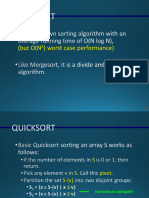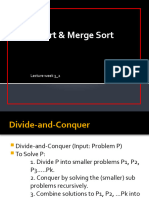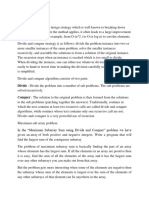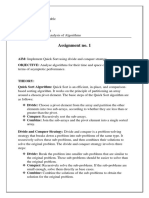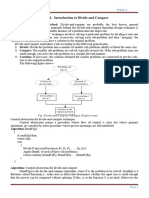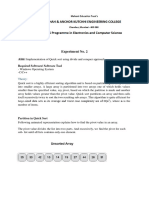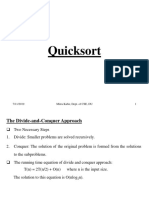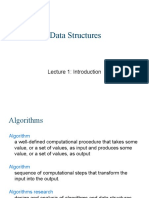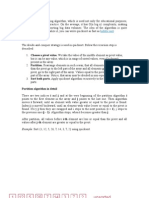0% found this document useful (0 votes)
41 views41 pagesQuick Sort
1. A pivot element is chosen from the array. Elements less than the pivot are moved before it and elements greater than the pivot are moved after it.
2. The left and right subarrays are then recursively sorted using the same approach.
3. This continues until the size of each subarray is 1, at which point the array is fully sorted.
The time complexity of quicksort is O(n log n) on average and best case, but can be O(n^2) in the worst case if pivot selection is poor.
Uploaded by
Sunny 17Copyright
© © All Rights Reserved
We take content rights seriously. If you suspect this is your content, claim it here.
Available Formats
Download as PDF, TXT or read online on Scribd
0% found this document useful (0 votes)
41 views41 pagesQuick Sort
1. A pivot element is chosen from the array. Elements less than the pivot are moved before it and elements greater than the pivot are moved after it.
2. The left and right subarrays are then recursively sorted using the same approach.
3. This continues until the size of each subarray is 1, at which point the array is fully sorted.
The time complexity of quicksort is O(n log n) on average and best case, but can be O(n^2) in the worst case if pivot selection is poor.
Uploaded by
Sunny 17Copyright
© © All Rights Reserved
We take content rights seriously. If you suspect this is your content, claim it here.
Available Formats
Download as PDF, TXT or read online on Scribd
/ 41


